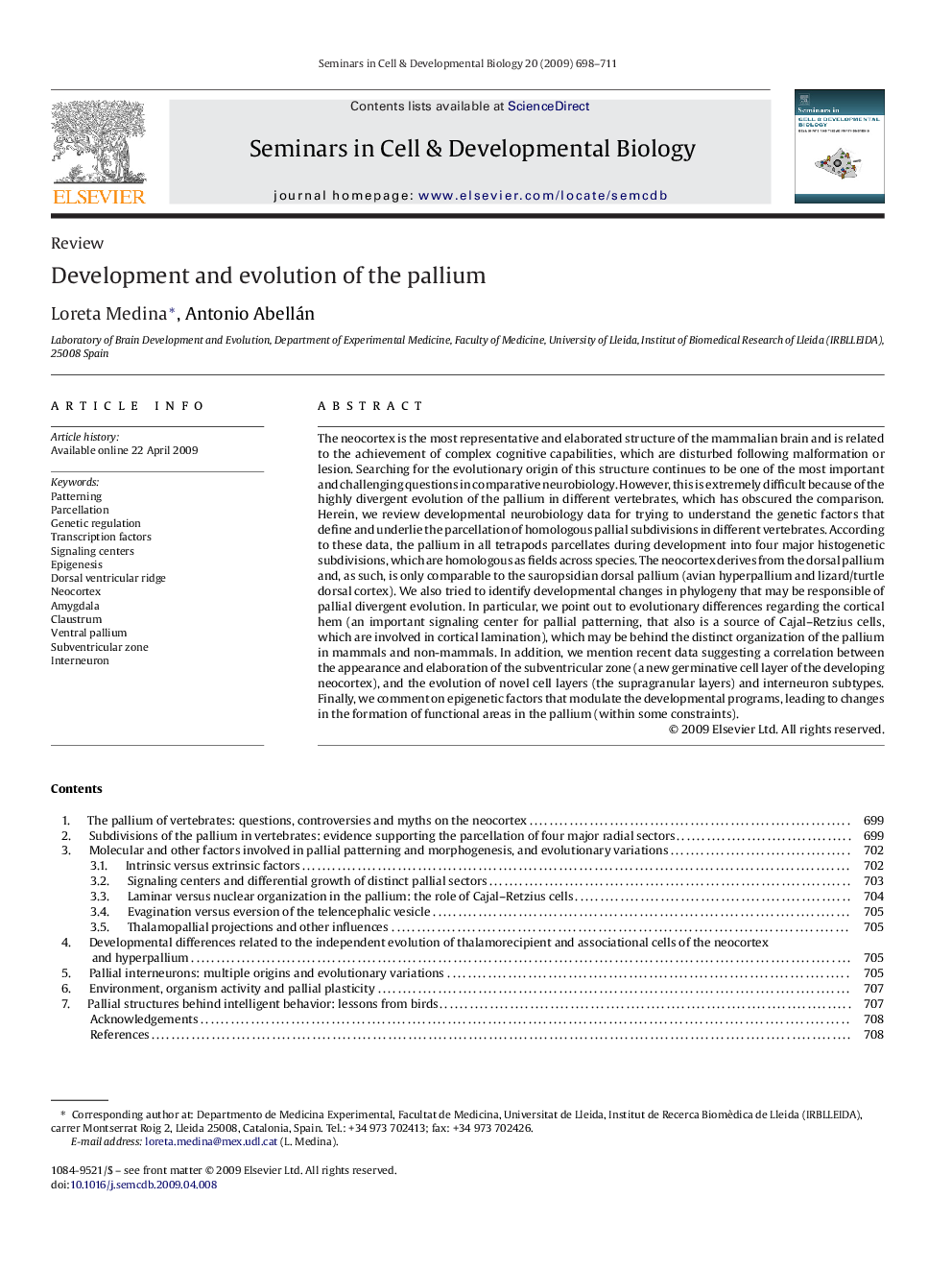| کد مقاله | کد نشریه | سال انتشار | مقاله انگلیسی | نسخه تمام متن |
|---|---|---|---|---|
| 10959285 | 1100419 | 2009 | 14 صفحه PDF | دانلود رایگان |
عنوان انگلیسی مقاله ISI
Development and evolution of the pallium
دانلود مقاله + سفارش ترجمه
دانلود مقاله ISI انگلیسی
رایگان برای ایرانیان
کلمات کلیدی
Amygdala - آمیگدال، بادامهPatterning - الگوسازیParcellation - انهدامEpigenesis - اپیژنزInterneuron - اینترنورون، نورون رابط، نورون بینابینیDorsal ventricular ridge - ریج بطنی پشتیTranscription factors - عوامل رونویسیclaustrum - مانعGenetic regulation - مقررات ژنتیکیsubventricular zone - منطقه فرعیneocortex - نوقشر، نئوکورتکسventral pallium - پالیوم شکمی
موضوعات مرتبط
علوم زیستی و بیوفناوری
بیوشیمی، ژنتیک و زیست شناسی مولکولی
بیولوژی سلول
پیش نمایش صفحه اول مقاله

چکیده انگلیسی
The neocortex is the most representative and elaborated structure of the mammalian brain and is related to the achievement of complex cognitive capabilities, which are disturbed following malformation or lesion. Searching for the evolutionary origin of this structure continues to be one of the most important and challenging questions in comparative neurobiology. However, this is extremely difficult because of the highly divergent evolution of the pallium in different vertebrates, which has obscured the comparison. Herein, we review developmental neurobiology data for trying to understand the genetic factors that define and underlie the parcellation of homologous pallial subdivisions in different vertebrates. According to these data, the pallium in all tetrapods parcellates during development into four major histogenetic subdivisions, which are homologous as fields across species. The neocortex derives from the dorsal pallium and, as such, is only comparable to the sauropsidian dorsal pallium (avian hyperpallium and lizard/turtle dorsal cortex). We also tried to identify developmental changes in phylogeny that may be responsible of pallial divergent evolution. In particular, we point out to evolutionary differences regarding the cortical hem (an important signaling center for pallial patterning, that also is a source of Cajal-Retzius cells, which are involved in cortical lamination), which may be behind the distinct organization of the pallium in mammals and non-mammals. In addition, we mention recent data suggesting a correlation between the appearance and elaboration of the subventricular zone (a new germinative cell layer of the developing neocortex), and the evolution of novel cell layers (the supragranular layers) and interneuron subtypes. Finally, we comment on epigenetic factors that modulate the developmental programs, leading to changes in the formation of functional areas in the pallium (within some constraints).
ناشر
Database: Elsevier - ScienceDirect (ساینس دایرکت)
Journal: Seminars in Cell & Developmental Biology - Volume 20, Issue 6, August 2009, Pages 698-711
Journal: Seminars in Cell & Developmental Biology - Volume 20, Issue 6, August 2009, Pages 698-711
نویسندگان
Loreta Medina, Antonio Abellán,